Zuzanna Pieczyńska won the Emerging Artist Award in the Jackson’s Painting Prize this year with her work ‘Christie’. In this interview, Jessica Alazraki, winner of the Emerging Artist Award last year, asks Zuzanna about how she investigates liminal space, grief and disappearance through light, space and colour.
Jessica: When did you start with this series?
Zuzanna: I started this series as my Masters Diploma. I read that every year in Poland approximately 20,000 people go missing. I was struck by that fact. It’s as if a small city got completely wiped off a map. I wanted my graduation project to be about something important, something that moves me. That’s why I chose the topic of disappearances. I cooperated with the Itaka Foundation, the biggest non-governmental organisation in Poland which works in the field of missing persons. I not only painted real people that had gone missing but also tried to show the trauma and difficult emotions that the missing person’s loved ones have to endure.
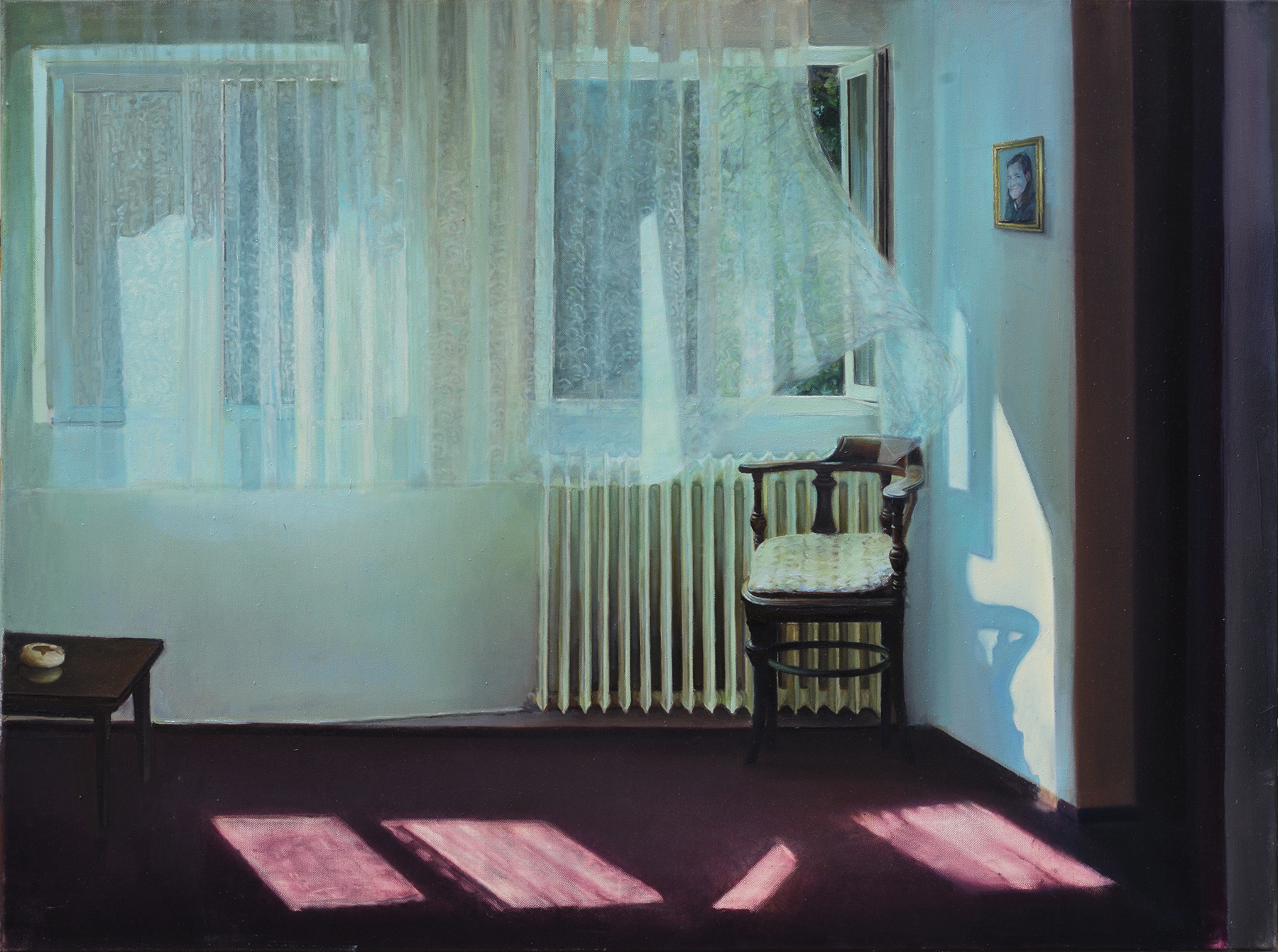
From the ‘Each year in Poland a small town disappears’ series:
Chrystie, 2021
Zuzanna Pieczyńska
Oil on canvas, 90 x 120 cm | 35.5 x 47 in
Jessica: How did this series come to you? It seems you are impacted by it.
Zuzanna: I have experienced a brief disappearance of a member of my family. Even though the experience itself was relatively short I think it was extremely impactful. The emotions that accompanied it are still very present when I recall that event and I think that’s the reason why the problem of disappearances particularly moves me.
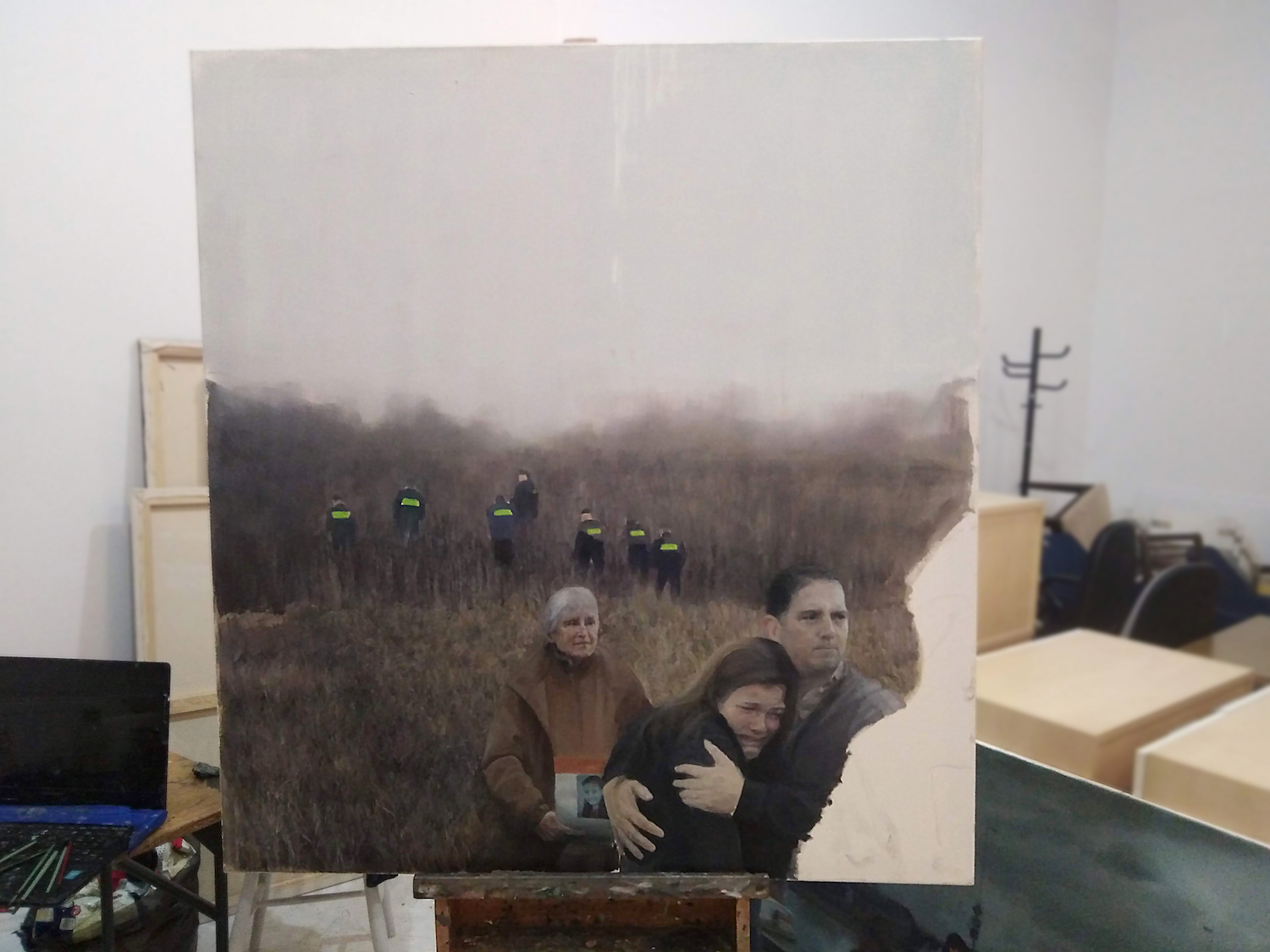
Work in progress:
Katie, 2021
Zuzanna Pieczyńska
Oil on canvas, 130 x 120 cm | 51 x 47 in
Jessica: Do you personally know the people in your paintings?
Zuzanna: Generally – yes, I paint my friends and relatives. Not in this series though. Even though I don’t know any of the missing people I painted personally, they are very much real and their stories are real too. I somehow feel that during the process of creating the series, by diving into their stories and the process of painting them itself, they became close to me in a way. It was important to me that the cases I depicted were of young people – I was drawn to them because I can identify with them more. The choice of who should that be was very difficult though. There are so many cases… How do you select just four of them? What criteria do you adopt? After all, each of the disappearances is a tragedy and none is greater than the other.
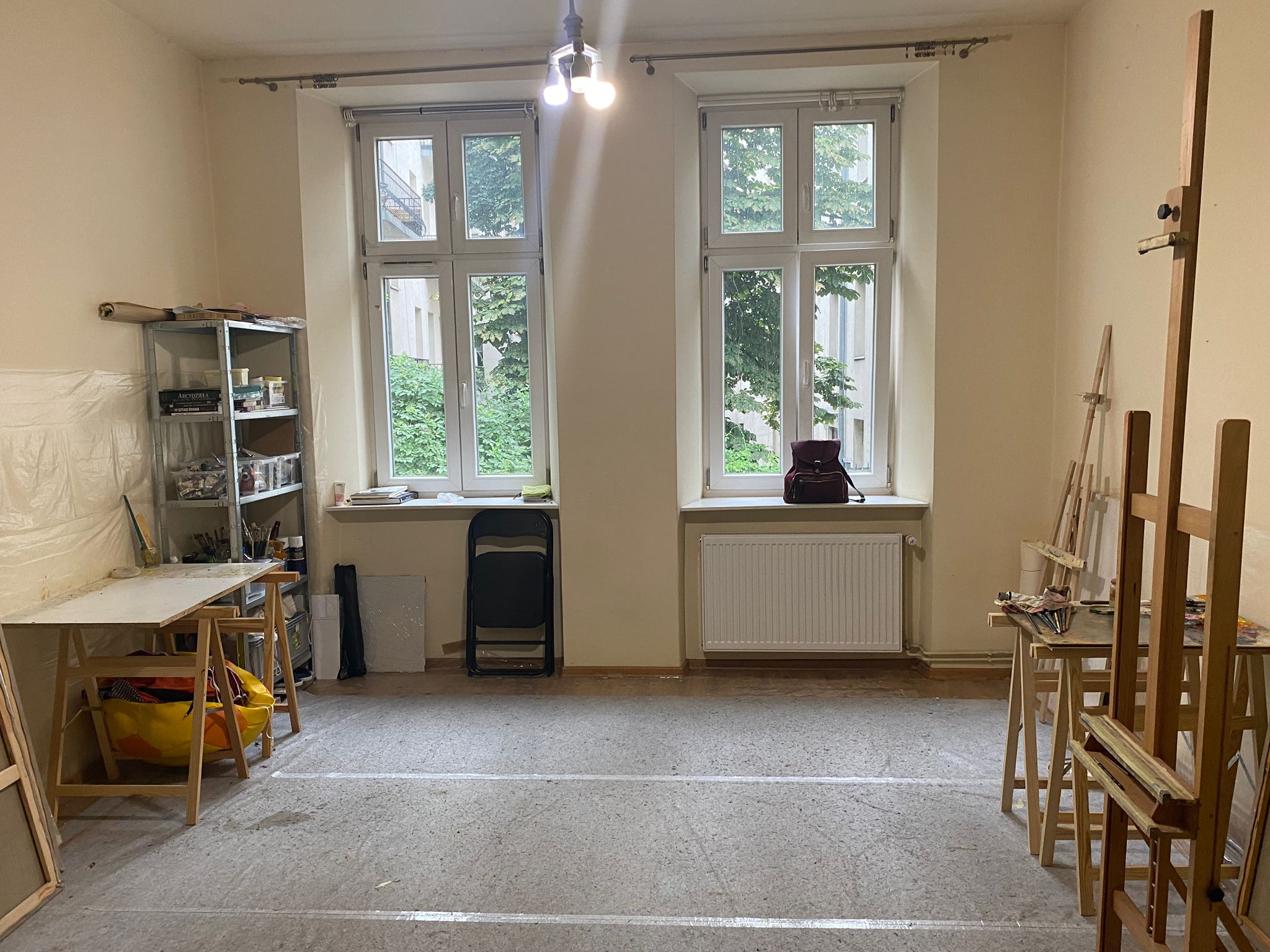
Zuzanna’s studio in Kraków, Poland
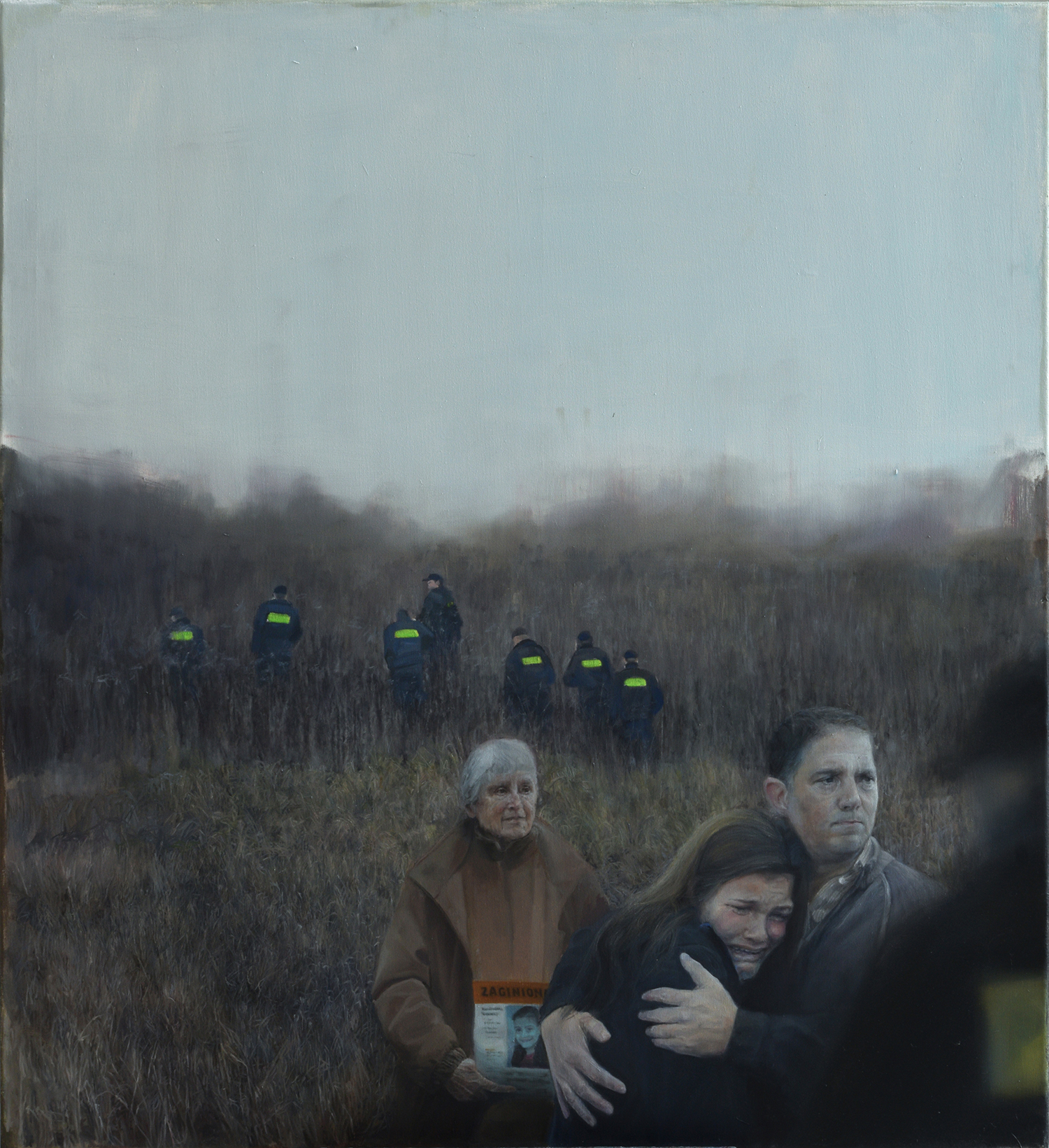
From the ‘Each year in Poland a small town disappears’ series:
Katie, 2021
Zuzanna Pieczyńska
Oil on canvas, 130 x 120 cm | 51 x 47 in
Jessica: Are you interested in creating awareness about what’s happening in this place? What do you want to say to people in other places?
Zuzanna: The main goal of the paintings in this series was to highlight certain cases of disappearances and to create awareness of the problem in general. I believe that paintings are emotionally more impactful than Xeroxed photos, therefore they have a better chance to stay in the memory of the viewer. I think of painting as a possible transmitter of emotions, as the images to appear on a canvas need to be first filtered through a human being, a living person. The painter themselves are the lens. In my opinion that’s what makes it a particularly strong medium.
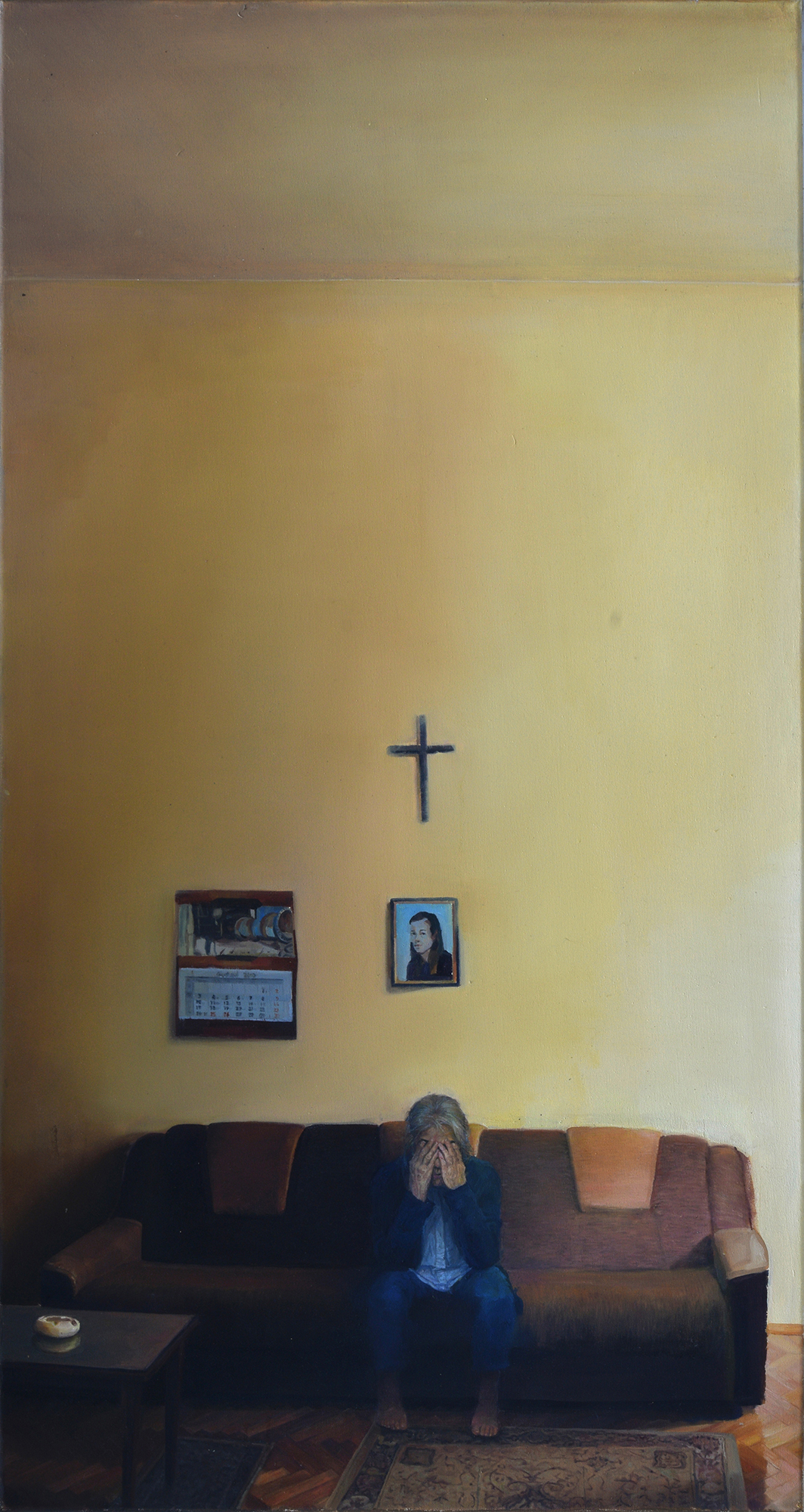
From the ‘Each year in Poland a small town disappears’ series:
Julia, 2021
Zuzanna Pieczyńska
Oil on canvas, 150 x 80 cm | 59 x 31.5 in
Jessica: Spaces seem to have such a strong presence in the compositions. You make an emptiness speak so much. Can you tell us about it?
Zuzanna: It’s a difficult question, even though leaving an empty space is always a conscious choice, I don’t give it too much thought, it’s more based on feeling. I think emptiness can indeed say a lot. It lets me lead the viewer’s eye, so I can tell the story through the painting the way I want. I like having some things left unsaid and empty spaces help me achieve that sometimes. Emptiness can do so much more though, especially when dealing with the topic where absence is one of the protagonists. In one of the paintings the empty vertical space hangs over a woman like a heavy burden, in another – it makes a small girl vulnerable by being surrounded by it, it emphasises that she’s all alone. The girl in that painting was most likely abducted. The empty space tells this story in a way – it’s dark and dense, contrasting with a childlike innocence, it fills the viewer with dread.
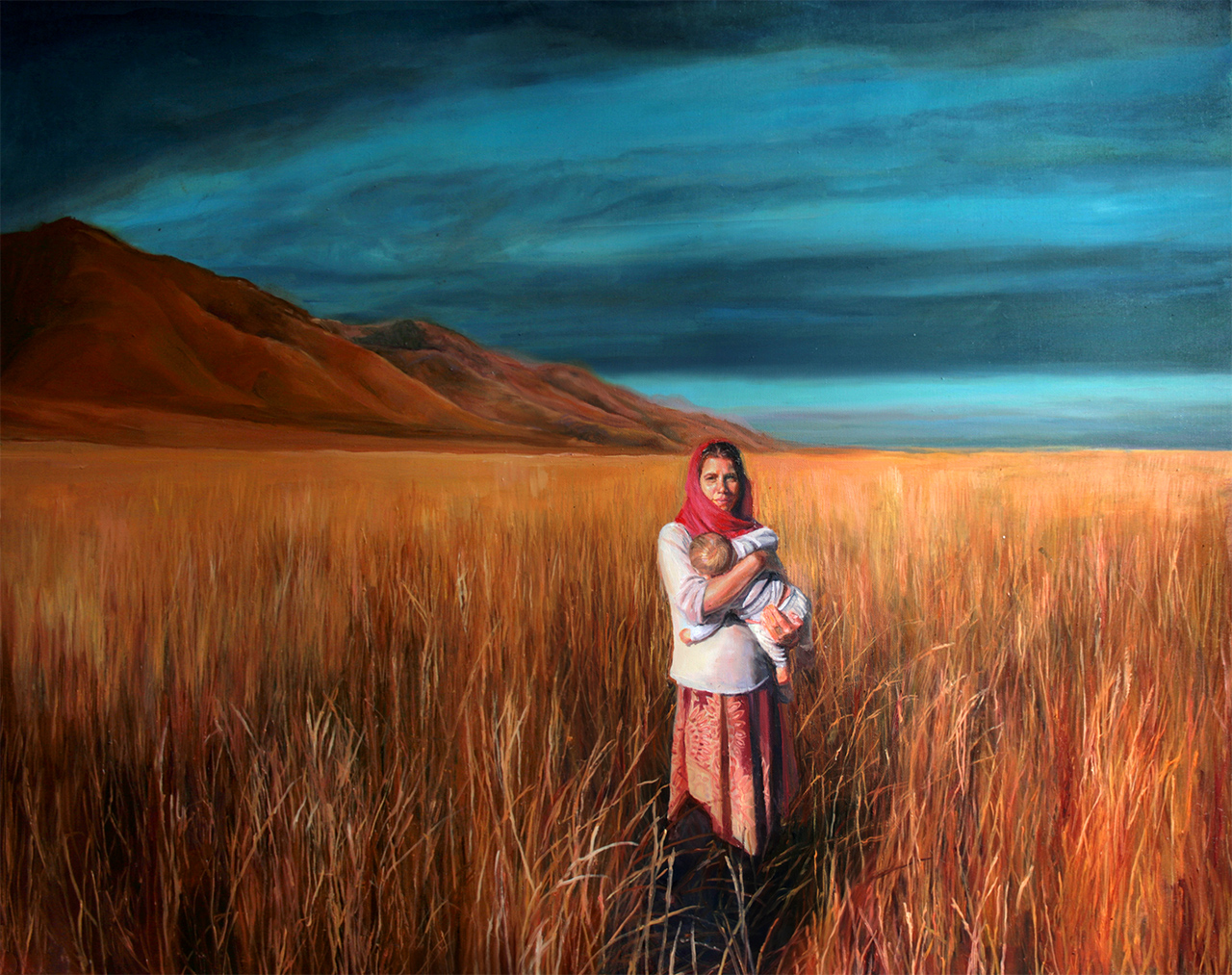
From the ‘Onirisms’ series:
Smallholding mother, 2020
Zuzanna Pieczyńska
Oil on canvas, 100 x 120 cm | 39 x 47 in
Jessica: I notice your colour palette contributes to the theme and content of your work. What is your relationship with colour?
Zuzanna: A very important part of this series is the concept of liminal space, which is an ambiguous condition that occurs during the transition from one state to another. The experience of disappearance forms a specific space where thresholds between absence and presence, life and death, loss and mourning are blurred and undefined. It reminds me of the moment just before the storm – it’s somewhere in between, the aura has changed, the air is dense and sultry, yet it’s still not raining. That’s why I depicted the four missing people in a scenery preceding a storm. The dark, blue palette lets me capture the atmosphere of that moment. The light and colour collaborate to create this very specific aura.
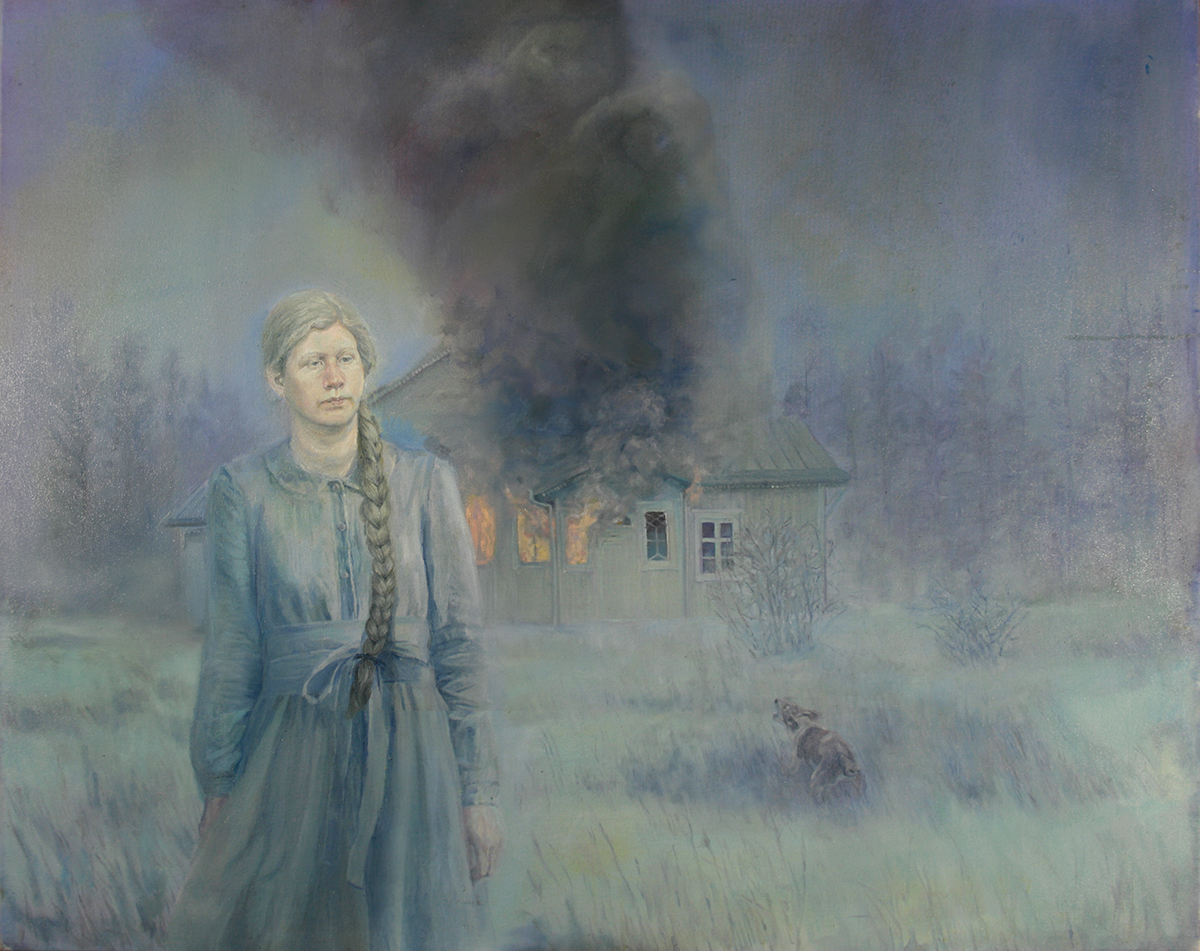
From the ‘Onirisms’ series:
Indifference, 2020
Zuzanna Pieczyńska
Oil on canvas, 120 x 100 cm | 47 x 39 in
Jessica: I can see you use light to describe emotion. Do you want to tell us more about that?
Zuzanna: I really like playing with light and shadow, I think they can be very interesting painting themes on their own. Light gives you a whole variety of possible usages. Among other things it’s a brilliant metaphor builder. For instance it was very helpful in translating my very personal experience of struggling with depression into a visual language. I sometimes use it in my artworks as a literal tool. In the last series, I created four portraits of missing people using age progression. But their faces can’t be seen until the light behind the canvas is turned on. Otherwise it’s just a white, blank surface. This helped me capture that strange space those people are stuck in: they still exist in the structure of their families, yet they are not with them anymore. They are here, yet they are not.
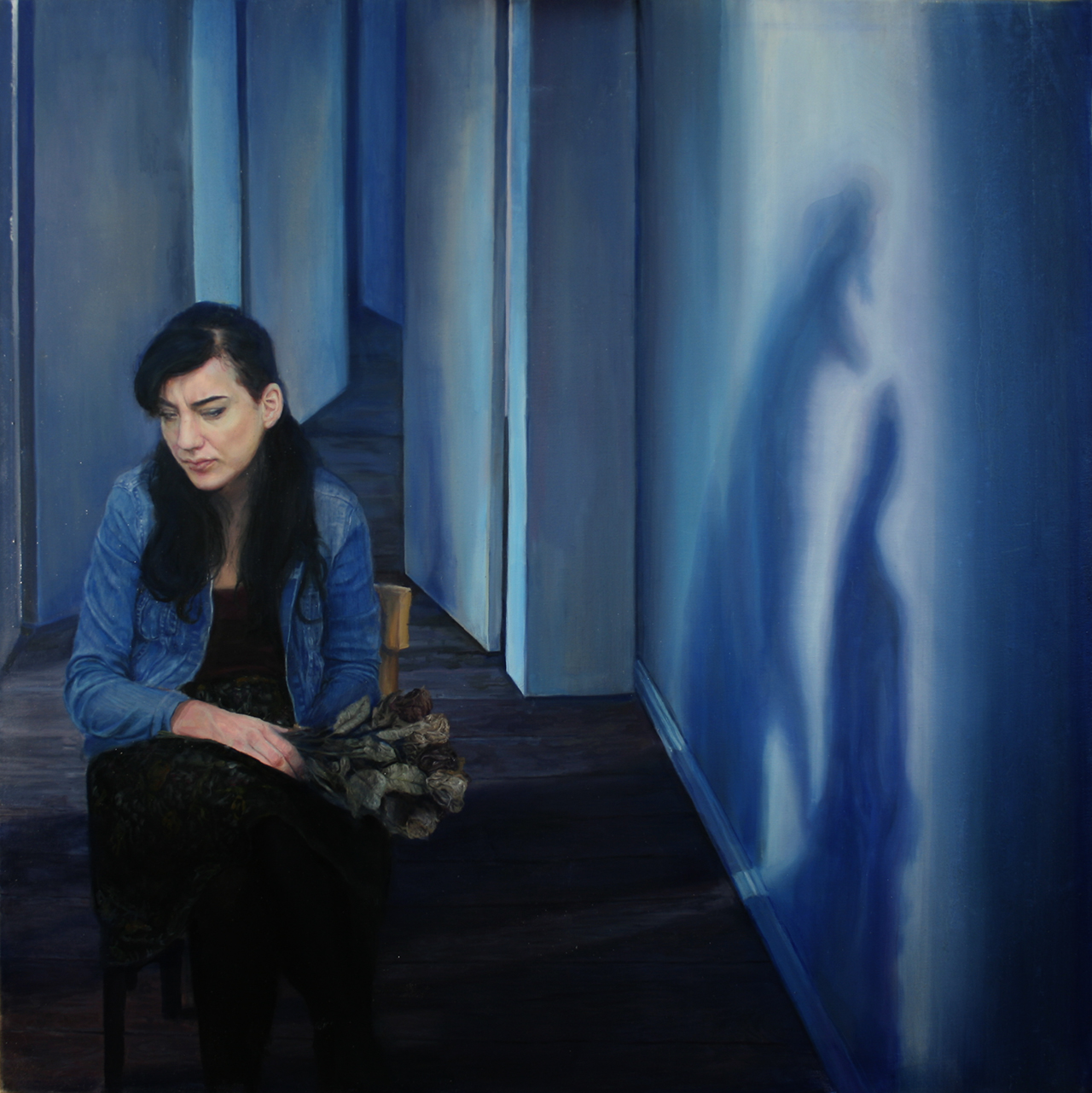
From the ‘Onirisms’ series:
Battless, 2020
Zuzanna Pieczyńska
Oil on canvas, 120 x 120 cm | 47 x 47 in
Jessica: Do you sketch before you go into the canvas?
Zuzanna: I have a rather unorthodox approach to sketching. I do sketch before I start a painting, but I do it in the form of a collage, made on a computer.
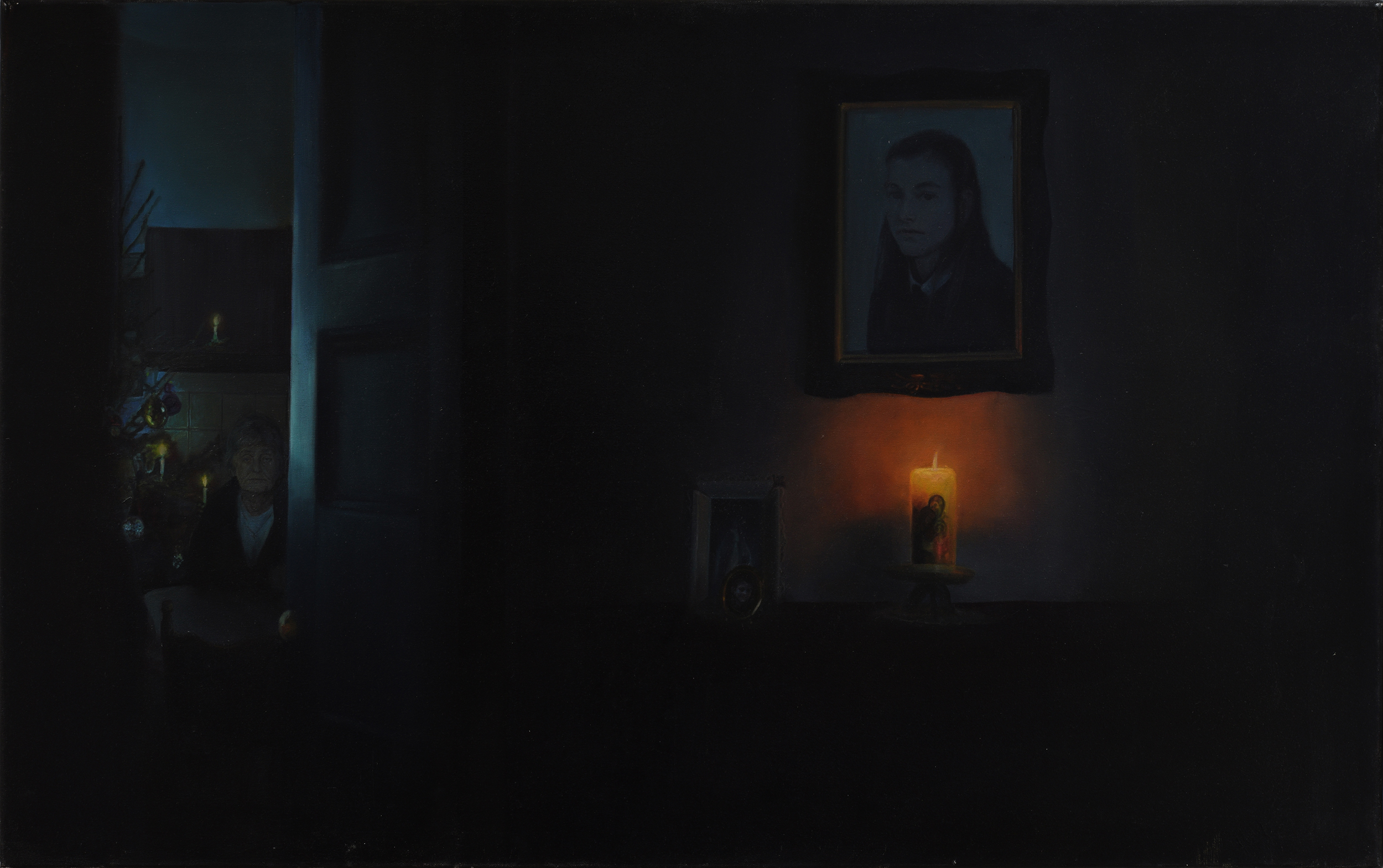
From the ‘Each year in Poland a small town disappears’ series:
Yolie, 2021
Zuzanna Pieczyńska
Oil on canvas, 100 x 160 cm | 39 x 63 in
Jessica: Can you describe or talk about the process and how long does it take you to do these pieces?
Zuzanna: It always starts with an idea. I usually know what’s going to be there, and what the composition is going to be like. Then I create a collage. I try to capture the idea best I can, I put together different photographs. It gives me a lot of flexibility as I can create my own reality and change it in whatever way I want. But I still have a reference that allows me to paint realistically.
Sometimes one collage leads to another one. I really like Picasso’s quote who said that “inspiration exists, but it has to find you working.” Sometimes the idea needs to rest though. It needs time to ripen.
Finally I paint and the collage merges into one coherent piece. Painting gives me a whole new range of possibilities and tools. For instance I can create an illusion of movement or change face features. The last step is closing the computer, stepping away from the easel and looking at the painting with a completely objective eye, that is not biased by the collage I made. In the last series one painting usually would take a month to make.
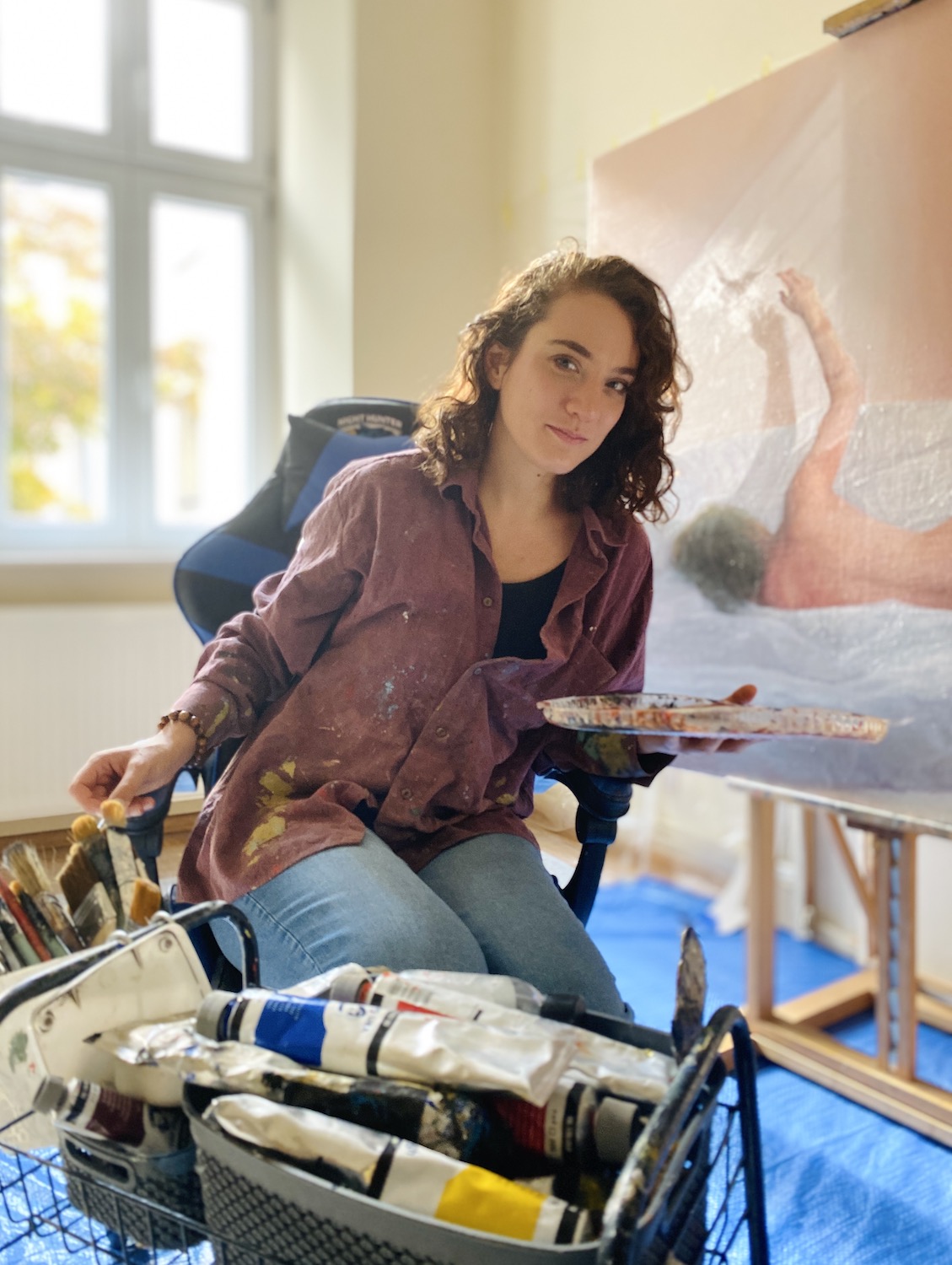
Jessica: Who are your biggest influences artistically?
Zuzanna: I adore Polish modernists, so-called Young Poland painters. One of my favourites is Aleksander Gierymski. He was a representative of Realism but you can also see impressionist influence in his painting. Another one is Olga Boznańska in my very personal opinion she has something in common with Rembrandt, as she also was able to capture the character of the portrayed, their core, their soul. I wish to achieve this level of mastery in portraying people. To paint not only an image of a person, but to bring out their essence. Finally, my favourite painters are probably Stanisław Baj and Mark Rothko. In terms of style I do something completely different from them, but their art shows how impactful paintings can be and how they can evoke emotions. I find it extremely inspiring.
Further Reading
Jessica Alazraki: Narrative Through Colour and Gesture
Anna McNeil: Memory and Process
A Guide to Oil Painting
Ways to Sign Your Paintings
Shop Oil Painting on jacksonsart.com


